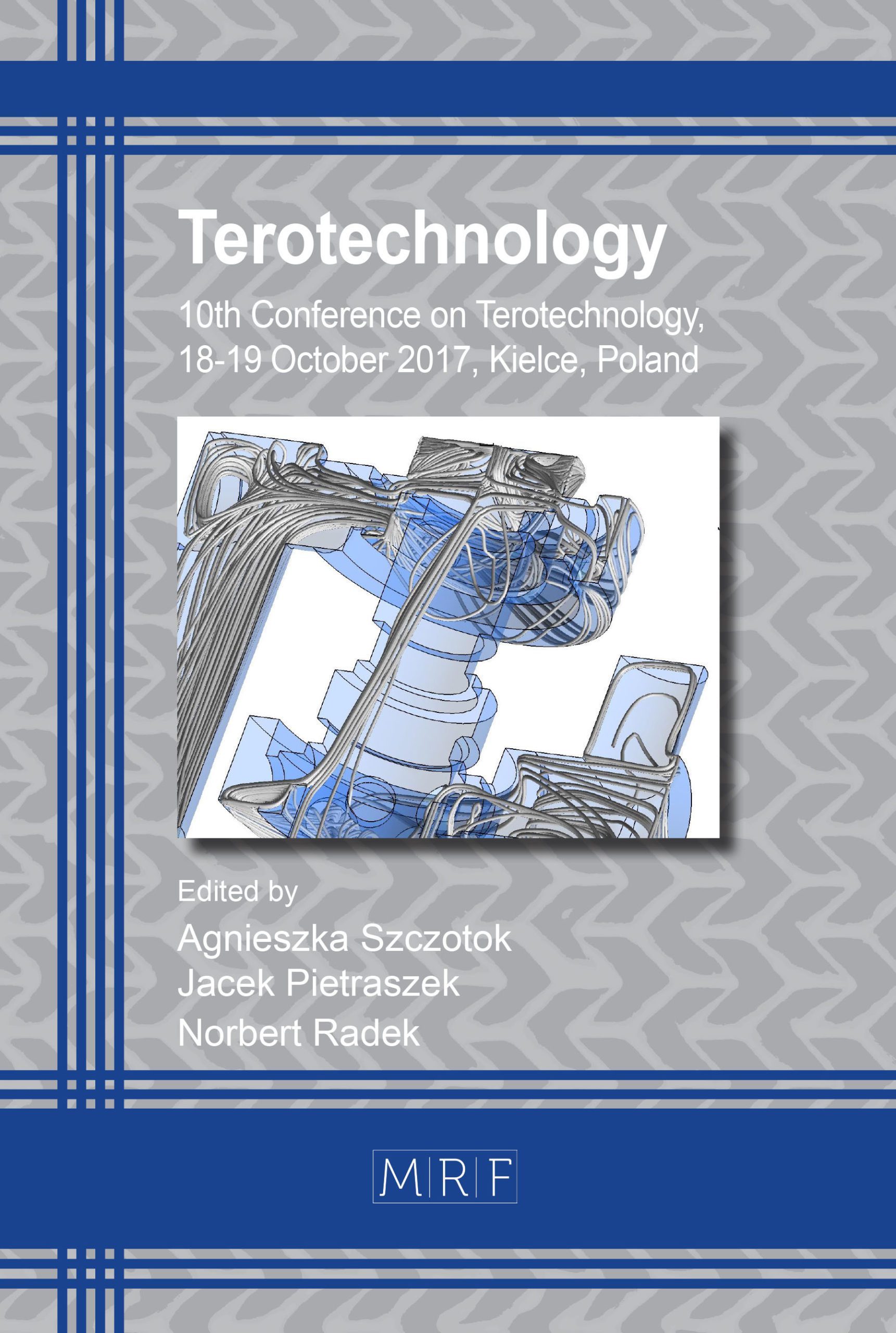Retention of a Diamond Particle in a Metallic Matrix
BOROWIECKA-JAMROZEK Joanna, LACHOWSKI Jan
download PDFAbstract. The paper deals with numerical and analytical modelling of retention of a diamond particle in a metallic matrix. The model of a diamond particle embedded in a metallic matrix was created using the Abaqus software. The analytical model of an elastic spherical particle in an elastic-plastic matrix was built. The aim of the paper was to determine the influence of the mechanical and thermal parameters of matrix materials on their retentive properties. The analysis has indicated mechanical parameters responsible for the retention of diamond particles in a metallic matrix. The pressure in the particle and the radius of plastic zone around particle were analyzed.
Keywords
Diamond Tools, Sinters, Finite Element Method, Mathematical Modelling
Published online 7/16/2018, 4 pages
Copyright © 2018 by the author(s)
Published under license by Materials Research Forum LLC., Millersville PA, USA
Citation: BOROWIECKA-JAMROZEK Joanna, LACHOWSKI Jan, ‘Retention of a Diamond Particle in a Metallic Matrix’, Materials Research Proceedings, Vol. 5, pp 7-10, 2018
DOI: http://dx.doi.org/10.21741/9781945291814-2
The article was published as article 2 of the book Terotechnology
![]() Content from this work may be used under the terms of the Creative Commons Attribution 3.0 licence. Any further distribution of this work must maintain attribution to the author(s) and the title of the work, journal citation and DOI.
Content from this work may be used under the terms of the Creative Commons Attribution 3.0 licence. Any further distribution of this work must maintain attribution to the author(s) and the title of the work, journal citation and DOI.
References
[1] J. Konstanty, Powder metallurgy diamond tools, Elsevier, Oxford, 2005.
[2] J. Borowiecka-Jamrozek, J. Konstanty, Microstructure and mechanical properties a new iron-base material used for the fabrication of sintered diamond tools, Advanced Materials Research 1052 (2014) 520–523. https://doi.org/10.4028/www.scientific.net/AMR.1052.520
[3] J. Lachowski, J. Borowiecka-Jamrozek, Modelling Thermomechanical Response of a Diamond Particle in a Metallic Matrix, Engineering Transactions, 65 (2017) 105–112.
[4] J. Borowiecka-Jamrozek, J. Lachowski, Modelling of retention of a diamond particle in matrices based on Fe and Cu, Procedia Engineering 177 (2017) 289 – 296. https://doi.org/10.1016/j.proeng.2017.02.227
[5] SIMULIA Dassault System, Abaqus Analysis User’s Guide, ver. 6.14 (2014).
[6] D.A. Akyuz, Interface and microstructure in cobalt-based diamond tools containing chromium, PhD thesis, Ecole Polytechnique Federale de Lausanne, Lausanne, 1999, pp.105–108.
[7] L.D. Landau and E.M. Lifszic, Theory of Elasticity, 2nd ed. , Pergamon Press Ltd., Oxford, 1975.
[8] R. Hill, The Mathematical Theory of Plasticity, Clarendon Press, Oxford, (1950, reprinted 2009) pp. 97-101.
[9] A. Romański, J. Lachowski, H. Frydrych, Energy of plastic deformation as an estimator of the retentive properties of the metal matrix in diamond impregnated tools, Diamond Tooling Journal 1 (2009) 28-32.
[10] Spinger Handbook of Condensed Matter and Materials Data, eds. W. Martienssen & H. Warlimont, Springer Berlin Heidelberg 2005.
[11] A. Romański, Development of metal matrix for sintered diamond tools, AGH, Dissertations-Monographs, No 303, Kraków 2015 (in polish).































